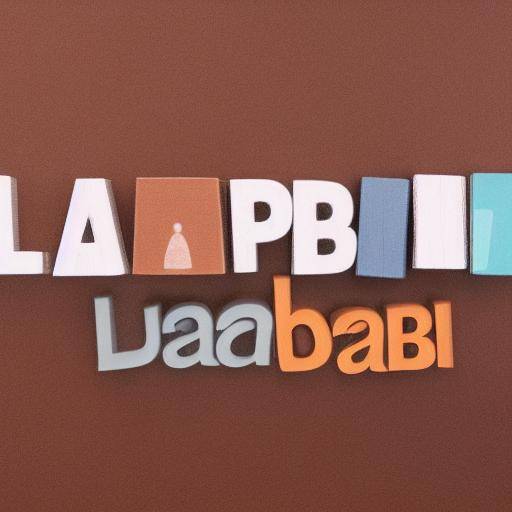
Introduction
In the current working environment, flexibility in the reward system has been built as a key tool to boost employee motivation. In this article, we will deepen the relevance of flexibility in the reward system and its impact on the productivity and commitment of the labor teams.
History and Background
The evolution of reward systems in the workplace has its roots in human resources management throughout history, from initial forms of compensation to current performance-based systems. As human resources management has developed, flexibility has emerged as a crucial element in adapting reward systems to changing labour realities.
First forms of compensation
In the first civilizations, labour compensation was limited to the provision of basic goods such as food and shelter. Over time, these rudimentary systems evolved into metallic wages and other benefits, adapting to the economic and social needs of each time.
Modern development of reward systems
With industrial revolution and increased organizational complexity, more structured reward systems emerged. The scientific management of work promoted by Frederick Taylor introduced performance bonuses, while Elton Mayo's human relations approach highlighted the importance of labor satisfaction for productivity.
Emergence of flexibility
In recent decades, globalization and the diversification of the workforce have led to the need for more flexible reward systems. Companies began to recognize that uniform approaches are not always effective, giving way to models that allow employees to choose benefits that best fit their individual needs.
Analysis in Deep
Benefits of Flexibility in the Reward System
Flexibility in the reward system allows organizations to adjust to the changing needs of employees, which in turn can enhance productivity and commitment to work. When employees perceive that their personal and professional needs are reflected in a flexible reward system, they are more likely to feel valued and motivated.
Increase in labour satisfaction
Personalization of rewards can increase labor satisfaction, as employees have the opportunity to select benefits that they really value, such as flexible working hours, professional development opportunities or personalized financial incentives.
Improved talent retention
A flexible reward system can be a decisive factor in retaining talent. Employees who feel that their needs are met and valued tend to show greater loyalty to the organization, thereby reducing rotation rates and costs associated with hiring and training new employees.
Challenges of Implementing Flexibility in the Rewards System
Although flexibility in the reward system carries obvious benefits, its implementation also presents challenges. Equitable, transparent and coherent management in the allocation of individual rewards can be complex. It is essential to find a balance between flexibility and equity to ensure the perception of justice by all team members.
Challenges of equity
Perception of injustice can arise if employees feel that some receive disproportionate rewards compared to others. Equity in the distribution of rewards is essential to maintain the morality and cohesion of the team.
Administrative complexity
Implementing a flexible reward system requires careful management and additional resources to manage available options. Organizations should invest in systems and processes that facilitate customization without compromising operational efficiency.
Comprehensive review
The ways to apply flexibility in the reward system vary according to context and organizational culture. Businesses are exploring different approaches, from the inclusion of flexible benefits to the customization of incentive schemes based on individual needs. While implementation strategies may differ, it is undeniable that flexibility has become a determining factor in motivation and retention of talent.
Flexible benefits
Companies offer benefits packages that employees can customize according to their preferences. This may include options such as personalized health insurance, retirement plans, additional vacation days and welfare programs.
Personalized incentive schemes
Individual performance-based incentive schemes allow employees to receive rewards aligned with their specific contributions. This may include bonuses, commissions and professional development opportunities, designed to recognize and promote exceptional performance.
Examples of successful implementation
Organizations such as Google and Microsoft have adopted flexible reward systems that allow employees to choose from a variety of benefits that best fit their individual needs. These approaches have proved effective in maintaining high levels of satisfaction and commitment among employees.
Conclusion
Flexibility in the reward system is crucial to adapt to the changing needs of employees and maintain their motivation and commitment. Despite the challenges involved in its implementation, the benefits of a flexible reward system, including greater job satisfaction and talent retention, far exceed the difficulties. By adopting personalized and equitable approaches, organizations can create a more attractive and productive working environment.
Frequently asked questions
1. What is a flexible reward system?
A flexible reward system allows employees to choose from a variety of benefits and rewards that best suit their personal and professional needs.
2. What are the main benefits of a flexible reward system?
The main benefits include increased labour satisfaction, increased talent retention and greater motivation and commitment of employees.
3. What are the challenges of implementing a flexible reward system?
Challenges include equitable management of rewards, perception of justice among employees and the administrative complexity of managing multiple benefits options.
4. How can companies ensure equity in a flexible reward system?
Companies can ensure equity through the implementation of clear and transparent criteria for the allocation of rewards and through open communication with employees on how the rewards are determined.






















































